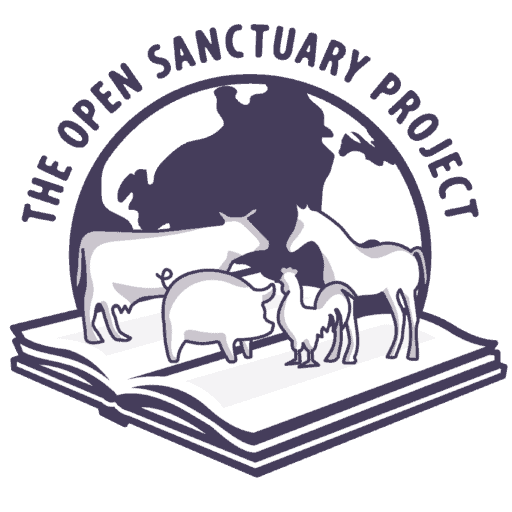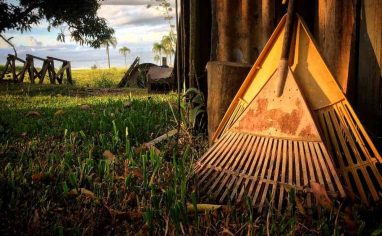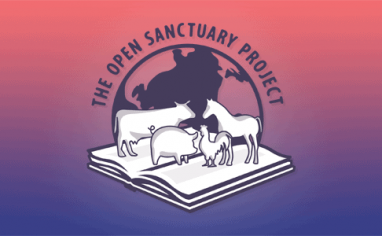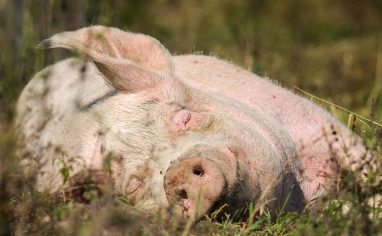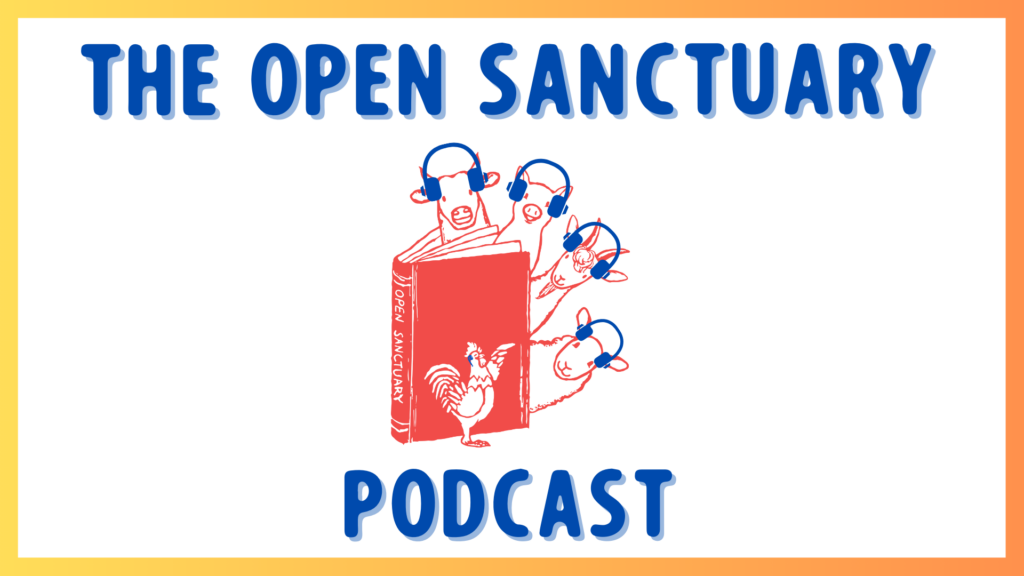
Subscribe To The Open Sanctuary Podcast
If you’d like to get the latest episodes of The Open Sanctuary Podcast, you can subscribe for free on all Podcast platforms, including Apple Podcasts and Spotify!
Episode Notes
Executive DirectorThe individual formally in charge of final decision making at an organization, who sometimes works closely with the organization’s Board of Directors. Sometimes a Founder is an Executive Director, especially early in a nonprofit’s growth stages. Mckenzee Griffler and NonprofitA non-governmental organization whose primary purpose is something other than selling goods or services. Specialist Julia discuss an essential metric for all sanctuaries to consider regularly: capacity. In this episode, we discuss many elements that play a role in determining an organization’s capacity, including spatial, quarantineThe policy or space in which an individual is separately housed away from others as a preventative measure to protect other residents from potentially contagious health conditions, such as in the case of new residents or residents who may have been exposed to certain diseases., personnel, financial, regulatory, and emergency response capacity. We talk about how the interplay between these elements can flex and change constantly, which is why it is so important to involve every member of your organization in the discussion of capacity regularly. This is the first episode of a series of conversations about this critical topic, so stay tuned!
—
This Episode’s Referenced Open Sanctuary Project Resources:
- 25 Questions To Help Guide Responsible Intake Decisions At Your Animal Sanctuary
- How To Create An Effective Rescue Policy For Your Animal Sanctuary
- Establishing Safe And Effective Quarantine And IsolationIn medical and health-related circumstances, isolation represents the act or policy of separating an individual with a contagious health condition from other residents in order to prevent the spread of disease. In non-medical circumstances, isolation represents the act of preventing an individual from being near their companions due to forced separation. Forcibly isolating an individual to live alone and apart from their companions can result in boredom, loneliness, anxiety, and distress. Protocols For Your Animal Sanctuary
- Recognizing And Managing Compassion FatigueA form of Secondary Traumatic Stress Disorder that can affect anyone serving individuals who have experienced or are currently experiencing trauma. At Your Animal Sanctuary
- The Importance Of Regular Health Checks For Residents At Your Animal Sanctuary
- Saying Goodbye With Respect and Safety At Your Animal Sanctuary
- Estimating Species Lifetime Care Costs At Your Animal Sanctuary
- Creating An Effective Set Of Contingency Plans For Your Animal Sanctuary
Episode Transcript (Auto-GeneratedThe following content was transcribed through an automated process and may contain transcription errors or misspellings.)
Mckenzee Griffler: Welcome to the Open Sanctuary Podcast. I am the executive director, Mckenzee Griffler. And today I’m here with nonprofit specialist Julia Magnus. And today we’re talking about one of the most important things that any animal sanctuary with any species mix and any population size really needs to consider and consider quite frequently as they grow and change and mature. And that is the question of capacity. Julia, when you think about capacity, it’s a major, major question as you pointed out and I tend to think about capacity as being dependent on a number of factors. I almost think about it as an ecosystem. There is no hard and fast ideal number of residents that a sanctuary should have, but rather we should think about every element of the factors that go into calculating capacity’s different inputs into this sanctuary lifestyle, the sanctuary living spaceThe indoor or outdoor area where an animal resident lives, eats, and rests., what goes into this to make it a sustainable and functional ecosystem. And those things can change frequently.
Julia Magnus: Yeah. And I think the main thing that if you’re going to take anything away from this podcast episode, I think the most important thing to think about is that capacity is a lot of things and every sanctuary is going to have strengths and challenges in regards to capacity when you’re looking at capacity as a set of variables because I think often when we think about capacity a lot of people just jump straight to spatial capacity. Does the sanctuary physically have enough space to hold additional residents? And I think that it makes sense to think about it that way, but you can run into a lot of challenges if you’re only considering space as your capacity decision variable. And most importantly, the other takeaway is that there is a direct link between a sanctuary’s capacity and being mindful of the variables and limitations of their capacity and the sanctuary’s ongoing sustainability as an organization that can provide lifelong compassionate care to animals.
Mckenzee Griffler: Yeah, I totally agree with that. As somebody who still works in rescue and, you know, direct care. One thing that I think I’ve seen pretty frequently is that many, many organizations can be at risk of committing to a number of residents that exceeds their capacity. Those kinds of issues can come from potentially underestimating your abilities within a number of the different factors that go into the capacity calculation as it were or that the assessment of your sanctuary ecosystem. Some of those can be like the capacity of your staff and administration and whether they’re suffering from compassion fatigue and burnout. There are a lot of other things I’m sure you’ve seen as well.
Julia Magnus: Oh, yeah, definitely. I think the challenges of not being mindful of your capacity can be so existential for an organization because if you have one of these variables we’re going to talk about and they’re significantly falling behind, you’re going to probably end up trying to stretch other variables to make up for those deficits. And that, I believe, is where sanctuaries can run into cascading troubles to constantly play catch-up when ideally we’re hoping for a future where sanctuaries don’t run into these issues and really mindfully take a look at these variables throughout the year and even throughout the month and really use them as a guidepost to see what improvements or where they need to enhance different capacity variables, where they need to add to them, and how they can go about doing them to most effectively conduct their mission, whatever that mission might be.
Mckenzee Griffler: Yeah, I totally agree and I’m glad that you mentioned mission because I feel like the question of capacity is one of these questions that is similar to your organization’s mission and vision. Please note that we do have another podcast on this question as well as resources on it. It’s another question that’s similar to your organization’s philosophy of care. And these are discussions that your organization’s team should be having regularly. Ideally, like if you’re starting a sanctuary, it would be great to have these discussions before you even begin operating and commit to revisiting these discussions, right? Regularly. So in this way your entire team — and I’m talking administrators, caregivers, everybody down to volunteers — there is no hierarchy in this. Everybody’s voice should hold an equal weight. You all can come to conclusions together that make the best sense for your organization. And in this way you can thoughtfully and compassionately craft a rescue policy that you can revisit regularly. And we do have a resource on rescue policy, which all of these resources will be linked in the show notes. And this might be a hard thing to mention, but I think this is not the easiest thing to name, but I do want to name some of the things that can happen to sanctuaries that exceed their capacity or don’t plan mindfully with their capacity. It can very easily fall on the staff. It can lead to increased compassion fatigue and burnout as staff are being asked to do more than they can really reasonably accommodate in their capacity as caregivers and as human beings. It can really unfortunately in some circumstances lower the care standards for residents as there’s just not enough time or people or just general ability for individualized care. The individualized care that we believe that any resident in any animal sanctuary should receive. And obviously I think all of us listening to this podcast have heard of horror stories of sanctuaries that had the best of intentions. But without a realistic viewpoint and exceeding their capacity, a lot of these things can really quickly happen. From there, you can lose your public confidence and your donor’s confidence, and your supporters’ confidence and your volunteers’ confidence if your capacity is far exceeded. And really unfortunately this can very quickly lead to a sanctuary being in distress or a sanctuary even closing because once you run into this cascading series of issues regarding capacity, it can be very hard just to keep a sanctuary operating at the standard that I think we all believe that they should be operating at. So capacity is a critical topic and I know I’m kind of just hammering the same thing over and over again, but I really want people listening to this to really think about it and to think about not only the variables we’re going to talk about, the different ways of thinking about capacity, but think about their own organization and think about where are you excelling at right now and where would you like to see more growth and how might you be able to have that growth? What plans might you need to do in place to raise these different variables of capacity? So, with that being said, you know, we do have a written resource on this topic, which is determining your animal sanctuary’s capacity for responsible care on our website, opensanctuary.org. But let’s talk about some of these variables of capacity and maybe some examples of why they’re important and ways of increasing them.
Mckenzee Griffler: Again, I’d like to say that no single one of these elements that we’re about to discuss are determinative. They all interact in different ways and they can change very quickly. One element being out of balance can impact all the others in lots of ways. So, it’s important to think of them not in necessarily a linear list of importance, but rather as a series of components that all work together to impact your organization’s capacity at a given point. It’s almost like a web of support. They’re all critical for keeping this web just kind of keeping the whole sanctuary feeling supportive and keeping it all structurally sound. And all of these variables are things that all sanctuaries have to think about. These are variables that sanctuaries of all sizes and all prestige levels, they think about them. Sometimes they have a hard time with them. So if there’s any of these that you’re thinking in your organization, “Oh gosh, we really need to work on that.” I also just want to say that this is something that all sanctuaries are always working on. This is kind of a bedrock concept for sanctuary. And you shouldn’t necessarily be too down on yourself if you are recognizing any deficits in your organization and just use it as an opportunity to plan.
Julia Magnus: Yeah, I agree. And I think like, again, I don’t know, this is kind of something that popped up in my head recently, but that concept of a sanctuary’s ecosystem: any given element can change at any given point and that is not a matter of blame or fault. It’s just things that happen in ecosystems and so then do you have the flexibility to adjust? So let’s probably talk about some of these elements. So as we mentioned a little earlier, I’d say a variable that is the most visible to others is that of spatial capacity. How physically large is your sanctuary? And there’s a lot of ways that you can break that down where it becomes a fair bit more complicated than you might think. So, first there is just how big is your property grounds?
Mckenzee Griffler: Yeah, that’s a very important and a very obvious thing for anybody operating a sanctuary to take a look at. But included in that consideration is what are the actual appropriate living spaces for whatever species you’re caring for.
Julia Magnus: Because obviously 20 acres is a very different situation between 10 ducksUnless explicitly mentioned, we are referring to domesticated duck breeds, not wild ducks, who may have unique needs not covered by this resource. versus 10 cowsWhile "cows" can be defined to refer exclusively to female cattle, at The Open Sanctuary Project we refer to domesticated cattle of all ages and sexes as "cows.". And that is really critically important to think about when you’re thinking about capacity not only by a population level but also by a species and an individual level. And this also includes the idea of the need for flexible living arrangements. And flexible living arrangements we believe are really critical to be available in your sanctuary. So, let’s say you have a herd of five cows that get along great for three years and then one day two of the cows just decide that they really don’t like each other. And that can happen because cows are individuals and you can’t just keep two individuals who really don’t get along just living with each other till the end of time. You have to do something about that. So, a flexible living arrangement means that you have the ability to create a different herd of cows so that now you’ve got two herds of cows because you can’t just leave that cowWhile "cow" can be defined to refer exclusively to female cattle, at The Open Sanctuary Project we refer to domesticated cattle of all ages and sexes as "cows." alone because that’s not good either. And if you didn’t have that flexible living arrangement, the quality of life for that entire herd of cows would decrease. So it can sometimes be hard for visitors if someone comes to your property, to your sanctuary and doesn’t understand that you keep a space open for, you know, a variety of reasons. Maybe someone gets injured and they need a place away from their friends, but they can still see each other. Maybe you need to have a space available that you can create new herds. Or all of these factors mean that having a space in each of your living areas that allows for that flexibility can be a really great mark of a sanctuary doing its best to plan for the future. And sometimes we’ve heard from people, they’re like, “Oh, if I keep that space open, sometimes people say, “Oh, well, you have a spot in your barn, so obviously you need to bring in more residents to fill that spot.”” And one thing that we’ve seen or suggest is you could keep a sign on that stall that says like, “Hey, this stall is open as a flexible living arrangement in case our existing residents we’ve committed to need that space”.
Julia Magnus: And that can be a great opportunity to both educate the population, educate your visitors, and not create any preconceived notions that you’re just kind of sitting on space for no reason, and also demonstrate the level of care that you are committing to your residents. So, spatial capacity at first glance can be very simple, but there’s a lot of ways you can look at it when you’re really considering individualized lifelong compassionate care for species, especially species that might have very different requirements in terms of space, terrain, bedding, or as they get older, they might need completely different adjustments. So, space, there’s just a lot of ways you can look at it, which is why we have a number of resources just about different living arrangements by species. We have a resource on site planning that’s really good. We have a resource on zoning, which is really important, and we’re going to talk about zoning capacity soon. It’s really exciting stuff. But, you know, all of these things, really thinking critically about them can lead to more sanctuary success stories and can lead to better lifelong care for animals. And that’s really why we’re talking today at the end of the day.
Mckenzee Griffler: Yeah, I totally agree. I do have a number of things that I’d like to add on to that and I really love the point that you made because it’s something, you know, I have a micro sanctuary, but I have a fairly large yard. I do have three separate flocks of chickens, but people who see my yard in the city who work in rescue with me are like, “Oh, you have more space. You could take more.” I’m like, “No, there are a lot of reasons I can’t take more.” And it’s not space. Another reason I can’t take more is because of the need for quarantine capacity. Poor quarantine capacity is so critical for protecting newcomers who you bring in. And, you know, you have to quarantine new people because they can potentially present a threat of disease or other biosecurityMerck Veterinary Manual defines biosecurity as ”the implementation of measures that reduce the risk of the introduction and spread of disease agents [pathogens].” risks to your existing residents. And so space isn’t just about, “Oh, you got the space, just do it.” No, I can’t just throw Miss Henny into, you know, the coop with an existing flock. I need to create space for Miss Henny for at least 30 days is what I typically do.
Mckenzee Griffler: And I believe that’s what we recommend generally and under the guidance of a veterinarian who has seen Miss Henny to quarantine safely, figure out if we see any signs that are troubling that might require treatment, that might require additional segregation. And I do need space in case, you know, Galileo, one of my roosters, hurts himself somehow, has an issue, becomes ill, he can be separate, and then recover from that safely. So having the extra space is not just a matter of, “It’s not just like you’re not filling all your spaces, you’re not doing your job.” I am doing my job because I’m protecting everyone I have and I’m ensuring that anybody new coming in is safe and quarantined and we’re minimizing biosecurity risks in a way that’s compassionate to everybody. So that’s another element of capacity that I think is wildly important. Another variable of capacity that’s quite easy to visualize is what is your personnel capacity? What’s your caregiverSomeone who provides daily care, specifically for animal residents at an animal sanctuary, shelter, or rescue. capacity? If you are running a micro sanctuary and it’s just you, that’s your capacity and how much capacity do you have to give individualized observation and care to the residents that you need? People really do have limits and that’s okay. And people’s limits change over time and that’s okay. It’s okay to be human. Humans are animals too. But if the variable of personnel capacity is exceeded from either a physical standpoint—that you just can’t get to every resident, you can’t see every resident, you can’t put hands on residents—or from a mental standpoint, it’s just too much for one person to take all of this stuff mentally into account or to have the capacity for personnel to be getting people to vets or to farriersIndividuals who provide hoof and trimming care, especially for horses or cows. and all of that stuff. Sanctuaries risk either their personnel getting injured or ill or burning out or leaving the organization because it’s just too much for them. And it most certainly also can result in a reduced quality of care for residents. So, it’s really important to always think about what you, if it’s just you, or what your volunteers or what your staff can reasonably do in terms of their own capacity. And it’s important to check in with your caregivers if you have a caregiving team and say, “Hey, how is this going for you?”.
Mckenzee Griffler: “Are you managing everything? Do you feel good? Do you feel like this is something that’s sustainable?” Especially if you’re thinking about maybe bringing new residents in or taking part in a rescue, it’s really critical to get the input of your caregivers or whoever is caring for your residents and have a realistic idea of whether they can take that additional amount of work on, especially as new residents in quarantine are much more resource intensive from a person perspective than other residents because if we’re quarantining properly—and you can check out our resource on quarantine—we’re talking about a separate area, probably with separate tools in the world of HPAI that we live in. We’re talking about booties and isolation and a lot of really time-consuming steps and that might just be for one or two residents, but you can’t ignore those things. So my takeaway is, you really need to be in touch with whoever’s doing the work of your animal care if it’s not you and make sure that their capacity is acknowledged and appreciated and not necessarily just taking them for granted as somebody who’s going to just always be there and if you add species it’s negligible because it’s not negligible. These are individuals that we’re caring for and they’re all different and they all deserve to be known as individuals and a reduced caregiver capacity means that there has to be compromise somewhere.
Julia Magnus: Yeah, I totally agree. Caregivers are an important element of the ecosystem and if they fail, they’re a keystone species as it were. I mean, they are critical. If your caregivers are suffering from compassion fatigue, from burnout, the entire ecosystem could fail. This is quite real and I also think this is kind of on a side note an appropriate space to shout out micro sanctuaries where folks live with animals like a small number of animals as companions, maybe as you might consider folks living with a cat or a dog. And I want to give a shout out to the Micro Sanctuary Resource Center because micro sanctuary is an option if you’re interested in sanctuary and you’re feeling overwhelmed by the concepts of capacity. Like, it is possible for micro sanctuary caregivers to get overwhelmed as well.
Julia Magnus: It’s quite easy for if you’re a sole caregiver for you to get sick if you get the flu. It can become a lot very quick. So I’m not saying micro sanctuary is exempt from the same risk of exceeding capacity, but it is another way to consider approaching offering sanctuary if you’re interested in it where you might have a little bit more control over some of the variables that we’re talking about here. Moving on to, I would say, one of the most critical indicators for sanctuary’s capacity: financial capacity. Things cost money in sanctuary and things cost money very quickly in sanctuary. And we’re not just talking about paying the mortgage on your sanctuary. We’re talking about providing and maintaining appropriate living spaces. And that includes enrichment. That includes not just residents surviving, that means residents thriving. And we do have many affordable enrichment ideas. But there are things that you need to think about. Providing appropriate and nutritious food, supplements, etcetera, for each species. We know if we’re in sanctuary right now, we know that the cost of hay and straw is astronomical compared to what it was a few years ago. So, a lot of sanctuaries are feeling the squeeze right now with their financial capacity just because things have gone really hard with inflation. Things have gotten really expensive. And we also even have a resource that Julia wrote on how sanctuaries can deal with the question of inflation. Vet care is a huge subsection of financial capacity just because it is not cheap all the time. The more residents you get to get qualified veterinary care, and that’s not just emergency care because we know emergency care can come out of the blue and just be overwhelmingly expensive, but that’s also annual checkups, that’s wellness visits for everybody, that’s making sure that we can address issues before they become critical issues because again we believe at the Open Sanctuary Project that every resident should have the right to appropriate veterinary care. That includes peaceful and dignified end-of-life care which needs to be budgeted because a peaceful end of life is deserved just as much as a peaceful life we believe for any individual in sanctuary.
Julia Magnus: And of course financial capacity also needs to extend into taking care of your caregivers if it’s not just you. Because if your caregivers aren’t feeling cared for and it doesn’t feel like they can sustain their own life outside of sanctuary, more likely than not, you’re going to be experiencing a lot of caregiver turnover as people just can’t maintain a low-budget sanctuary caregiver lifestyle forever. So that’s something you need to think about. Obviously, not every sanctuary is going to have that variable, maybe right away, maybe ever, but it’s something to consider if you’re thinking down the line you’re interested in bringing on a qualified staff to really be with you in the long run.
Mckenzee Griffler: You know, this kind of reminds me, we also have a resource on the questions that you should consider when you’re embarking on cruelty, seizure, bust, and escape cases. And we kind of have a checklist in that resource if you do have a caregiver staff. You know, these are questions that you should look at as an organization. We also have a lot of, you know, responsible intake questions outlined in another resource that we’ll have in the show notes.
Julia Magnus: I think it’s 25 Questions for Responsible Rescue.
Mckenzee Griffler: Yeah, I think that that’s the one that I’m thinking of.
Julia Magnus: And these are really helpful guides. These are helpful questions for your organization to go through as an entire team with everyone included. And to gather input from every single person who’s involved to help figure out what your capacity is for caregivers and also, you know, figure out sometimes that’s going to involve potentially offering caregivers mental health support. Some of these situations are pretty dire that you may see or face when you’re choosing whether or not to participate in some situations. And it’s not just the animals, it’s also the caregivers. Everyone is a spoke in this little web of an ecosystem of sanctuary. So, we have to consider all of it. And so, I’m going to suggest you check out those resources in the show notes to consider running past your organization as a team.
Mckenzee Griffler: Another variable of capacity, kind of similar to financial capacity, but also different, kind of a mix between financial capacity and personnel capacity is what’s your veterinary capacity? Do you have a vet who feels confident for each of the species you’re providing care for? How far away are they? What do you do in case of emergency? Are we talking a 100-mile drive? Are we talking that you have a different veterinarian for emergencies who you’ve already had a conversation with who could do something? Because if you’re planning on, let’s say you have a lot of farm avian and you decide that you want to help take in a couple goats, just because you got a great chicken vet doesn’t mean you got a great goat vet in that chicken vet. And that is a very important variable for you to consider and also a very good impetus for you to treat your veterinarians very well, even if you don’t always agree with maybe their stated ethics, because if you don’t have the capacity of a veterinarian to see certain residents, you certainly need to think very strong and hard before you decide to bring in a resident of that species.
Julia Magnus: Yeah. It’s so important because even if your veterinarian is fully supportive and loves you, if all of a sudden you’re overseeing a massive hoarding case or a seizure case, they might be like, “What? I mean, 25 rescued individuals in really poor conditions is a little bit much.” So consulting with your veterinarians and viewing them as a member of your team is really critical in these situations so that you can make sure that they are on board and they are willing and able to take on this work as well because they’re a critical partner.
Mckenzee Griffler: Uh-huh. Kind of along those lines but different, we also have the regulatory capacity of your organization because everywhere that different sanctuaries are, are going to have a different really fun mix of regulations that they’re going to have to look at and be very mindful of. And that can be their local town or their unincorporated county or their city or their state or their country ordinances that say exactly whether they can have a certain species at all on their property legally and what that looks like and why. And for some ordinances, we’re talking about a weight limit of all the species combined, which is very strange, but it’s something you really need to pay attention to. Because if you’re looking at property somewhere and there’s a really tight restriction against certain species or in the case of chickens, an entire sex of a species, that’s really important to note before you embark on any kind of rescue or when you’re crafting your mission or when you’re thinking about starting a sanctuary or rescue on that property.
Julia Magnus: Yeah, I would also say that it’s really critical if you’re looking at purchasing space as a sanctuary, if you’re looking at renting, whatever you’re doing. When you’re locating your space, it’s really helpful to have knowledgeable local legal counsel who can go through those restrictions, those zoning and land use laws with you and provide you with specific advice as to what you can and cannot do. Don’t rely on realtors. Realtors want to sell you land. Go to an attorney and talk to them. It’s their job to give you the best advice and research this carefully according to your needs. So, I cannot recommend that more highly. It has happened so many times and we’ve heard so many stories of sanctuaries or rescues maybe operating on a property for a really long time, completely fine, beloved by the community. Maybe something happens and a neighbor doesn’t like you anymore and the neighbor could just go right to the county and say, “Hey, they are breaking the law here,” and then you got to deal with that. So, we’re not going to advocate openly on this podcast that you decide to break the law. We are also going to say just be aware of what the actual law is on the land that you are at and be aware that those laws can change.
Julia Magnus: And people can change. Yeah, the laws can change and people can change. So if you have a beloved neighbor, that neighbor could change at any given point. The only constant is change. So be prepared for that. And I would say like we should advocate on this podcast to follow the law. Lawyer here, like, yes, lawyer here says follow the law. Just because it avoids so many headaches that you just don’t need. No one needs.
Mckenzee Griffler: Yeah, I would say the last variable that we’re going to talk about is emergency response capacity. And this is a really important one to think about, even though it can be a really hard one. This is very related to contingency planning, which honestly we should do an entire resource on, but you always have to consider your ability to provide safety to residents or even evacuate them in the case of emergency. And that could be natural disasters, that could be your property floods, that could be a pipe bursts in your property floods, that could be so many things. And you need to have a plan for your residents. And if your plan to provide an emergency response to these residents is not doable or it’s not realistic, you need to figure out a way to make it realistic. And maybe that means start figuring out volunteers, start figuring out, do you know people with horse trailers? Do you know people that can help? Do you know people that could show up? Do you have a relationship with the fire chief? Do you have a mutual agreement with other rescues or sanctuaries in your area that in the case of emergency, you have each other’s back and you’re going to coordinate? Because if you have all these residents, but you don’t have a realistic plan to get them to safety, that is a problem. That is a critical capacity problem and we really hope that it never demonstrates itself as a problem. But we believe in proactive planning to make sure that these residents have as best a chance at a long beautiful individualized lifelong care existence. And so planning for bad situations and being aware of them and teaching your staff and volunteers about them is really important.
Julia Magnus: I would also add, contingencies aren’t just natural disasters. It occurs to me now, thinking about what we were talking about personnel earlier. What happens if you have a key personnel member leave? What happens if a founderSomeone who starts an organization. A Founder may or may not also be the Executive Director of an organization. dies? These things happen. And then do you have something in place? It’s hard to think about. Nobody likes to think about the worst case scenario, but doing so can actually make it not the worst case scenario when it happens. So, all of those variables in mind, and that’s not necessarily all the ways that one could slice the variables of capacity, but it’s the way that seems to work for sanctuaries. All of those in mind, what is the easiest way of not exceeding your variables of capacity?
Mckenzee Griffler: I mean, in my view, having regular check-ins between every member of the organization, talking about the state of your residents, the state of the caregivers, the state of the admins, how everybody is feeling at any given point and everybody being in touch with everything that’s going on on the ground is critical to keeping a good finger on where your organization’s capacity is at any given moment. And it will change moment to moment. And so making sure that this is a discussion that’s always at the forefront for everybody is a great way to make sure that you respect the limits of your sanctuary ecosystem and respect every member of that ecosystem.
Julia Magnus: Yeah, I definitely agree. And maybe you’ll see that a couple of your variables, you actually have an abundance of, which doesn’t necessarily mean you need to change your residents, like the amount of residents that you have or take on a big rescue, but it might mean an opportunity to help another organization and collaborate in different ways. So I think it’s important to look at your sanctuary’s capacity, your many variables capacity. And we’re going to have a different episode probably soonish about how to not exceed your capacity and how to expand your variables capacity. But I think it’s important to think about them not only as something to be worried about or, you know, think as a concern, but also as a possible series of opportunities to help animals in other ways if your sanctuary wishes to do so. But I think we’re going to leave it there just because I feel like we’ve had a great discussion just on the foundational idea of capacity.
Mckenzee Griffler: Obviously, this is a concept that’s near and dear to both mine and Julia‘s heart. So we’re going to talk about it some more, but if anybody listening to this has any additional questions or feedback or wants us to cover some other part of capacity, we’d be really happy if you could just send us a message or a DM or use our contact form and just get in touch with us because we love hearing from you and we love hearing all of your ideas for the Open Sanctuary Podcast as we continue to make these. Thank you.

Got A Podcast Idea? Contact Us!
If you have a topic or question you’d love to hear our staff address on The Open Sanctuary Podcast, please get in touch via our contact form!
